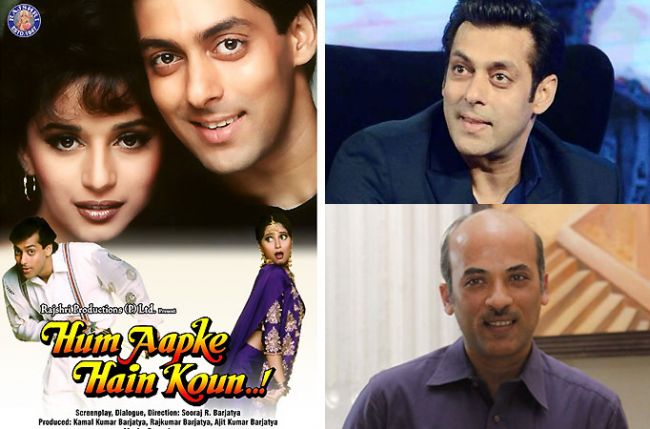
The year was 1994. A new movie, Hum Aapke Hain Koun, featuring the reigning diva of Bollywood Madhuri Dixit and up-and-coming Salman Khan, had released. The film, a love story with strong family values, had a rather polarising effect — the reviews of the day were dismissive, accusing it of being an extended wedding album. However, slowly but surely, the cinema halls across the country were witnessing a phenomenon that hadn’t been seen in a long time — entire families were coming to watch this film. So what was about this film that was so different?
Hum Aapke Hain Koun, after many years perhaps, kept the family at the heart of its narrative. It was a love story replete with family values. It epitomised sacrifice, duty and love as its cherished values. In many ways, it was Ramayana with a twist. No wonder entire families made a beeline for the cinemas.
The 1990s had seen a resurgence of some sort in Hindi cinema; after a decade of kitsch and bad taste, there had been a surge of better films. There had been a bunch of romances such as Aashiqui, Dil, Saajan, Deewana, Dil Hai Ke Manta Nahin and Hum Hain Rahi Pyar Ke. But the years preceding Hum Aapke Hain Koun, action-oriented revenge dramas have been ruling the roost. Think Aaj Ka Arjun, Thanedaar, Phool Aur Kaante, Beta, Khuda Gawah and Baazigar to name a few. Sooraj reportedly wanted to do something along the lines of his hit Maine Pyar Kiya (1989), so he famously decided to rework an older Rajshri film, Nadiya Ke Paar, but for a different set of viewers.
The film reportedly had a slow opening; a Mint story mentions that the Barjatya released the film only in 26 cinema halls across the country. By the 21st week, the number of halls showing the film had gone up to 522 and by 25th week, it had touched 730 theatre halls. The film had been recorded in optical stereo sound system and not many cinema halls were equipped with the advanced sound system. Ramanathan PS, head of sales, Rajshri Productions, was quoted in the report as saying, “We were very confident of the project and had gone for very limited release.”
One of the highlights of the film were its 14 songs, exactly the stuff they were panned for by critics. The film had a song for every ritual in a North Indian wedding — engagement (sagaai), marriage (shaadi, vidaai, joota chupai), baby shower (godh bharai), child birth and family get-togethers (antakshari) apart from love ditties, sung by the film’s lead pair. If in the subsequent Hindi films, particularly those made by Karan Johar and Yash Chopra, feature a lot of marriage songs, centred around a host of Punjabi rituals (sangeet and mehendi), the credit has to go to this film. One can say with some confidence that Dilwale Dulhania Le Jayenge happened, to some measure, because of this film.
The film’s trump card was Madhuri Dixit — the diva’s box office hold skyrocketed after the film. The ’90s belonged to her but after this film, she was untouchable. To this day, she is asked to perform to her hit song, Didi Tera Dewar Deewana. However, the film’s other characters like Renuka Shahane (who played her elder sister) and late Reema Lagoo (who played her mother) are among the fondly recalled stars.
The film, back in 1994, had earned Rs 72.46 crore, according to the Mint report. Adjusted for inflation, the family drama would have grossed Rs 973 crores today. The film’s lasting legacy is evident from the fact that it remains popular on television and has recently found acceptance on video streaming platforms as well.